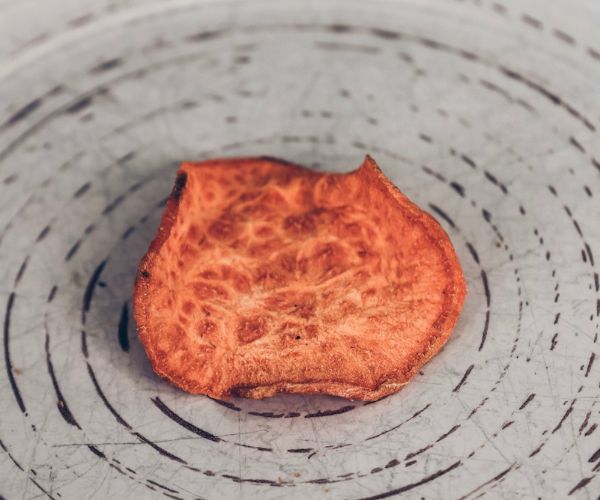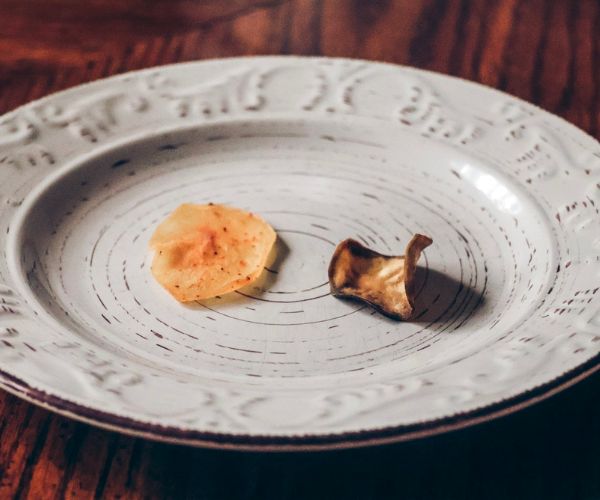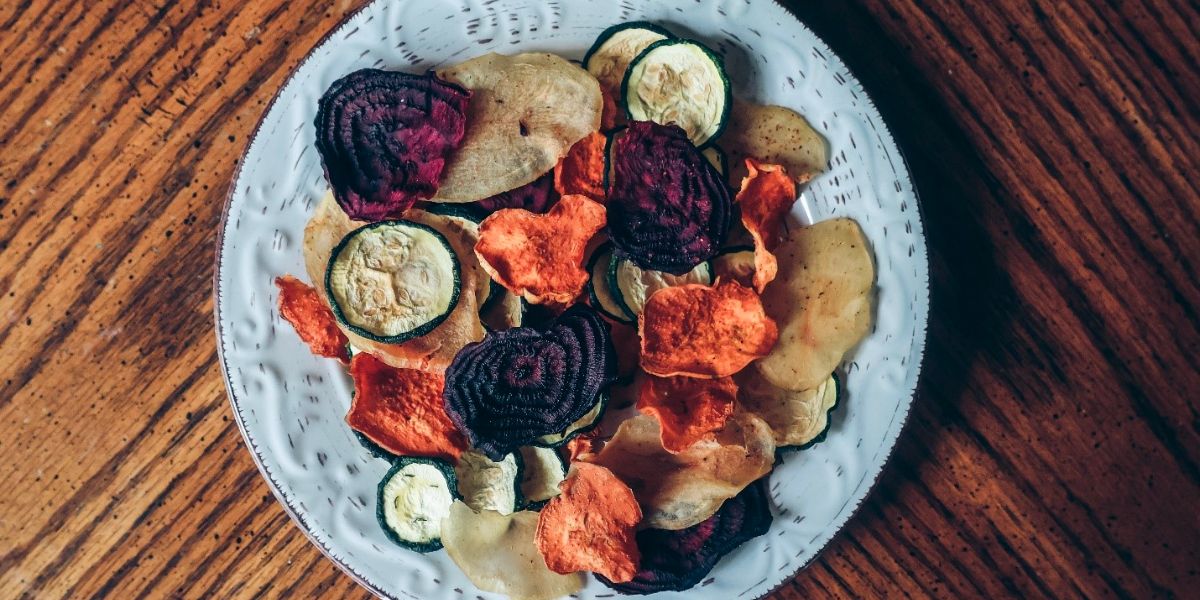Summer is the season of plenty.
These magical months bring an array of garden-fresh veggies, but those with exceptionally green thumbs may wind up with more produce than they can handle.
Why not turn the excess into a healthy, tasty chip?
Drying veg for chips is easy and fun, but it’s not as simple as it seems. Read on to learn how to make dehydrated vegetable chips correctly and discover essential techniques to keep them crispy, crunchy, and crave-able all summer.
Golden Rules for Making Veggie Chips

Dehydrating food for immediate consumption is not the same as dehydrating food for MREs or long-term storage.
While dehydrated veggie chips can be stored safely for extended periods, these flavorful little bites are meant to be eaten fresh. Since you won’t be rehydrating them later, it’s essential to learn some guidelines to make them taste good as-is.
Choose Your Vegetables Wisely
You can dehydrate most vegetables, but not all of them make great chips. You’ll want to avoid those that are squishy when ripe, such as tomatoes or avocados.
They will dry out but won’t take on a crunchy texture in the dehydrator. Veggies with a more solid structure, like squashes, roots, and tubers, are better for crispy chips.
If you’re unsure what vegetables to use, I’ve listed my favorites below. Just remember that dehydrating is a choose-your-own-adventure type of activity. Just because I’ve never had success with carrots doesn’t mean you can’t. It’s important to play around and see what you like.
Crisp winners
- Yams
- Beets
- Yuca
- Pea pods
- Kale
- Squash
Limp losers
- Carrots
- Romaine
- Onion
- Okra
- Arugula
 Yams crisp up nicely in the dehydrator.
Yams crisp up nicely in the dehydrator.
Know When to Blanch
Blanching is a way to pre-treat vegetables by scalding them in hot water, steaming them, or even popping them in the microwave.
This brief heat immersion lets them release liquid, dry faster, and retain texture and color when dehydrated. It also begins the cooking process, breaking down tough starch and fiber in the produce.
Blanching is crucial when working with starchy or fibrous roots like potatoes and beets. They wind up discolored and leathery if you don’t blanch them, tasting like a dry version of the raw root you started with.
On the other hand, watery veggies like zucchini and squash don’t need to be blanched. Their starch content is minimal, their fibers are easy to chew, and blanching makes them go mushy.
 Think blanching doesn’t matter? Think again. The potato on the left was blanched before dehydration and turned out delicious, while the one on the right wasn’t and tasted awful.
Think blanching doesn’t matter? Think again. The potato on the left was blanched before dehydration and turned out delicious, while the one on the right wasn’t and tasted awful.
Utilize Oil and Salt the Smart Way
Salt is integral to an excellent dehydrated chip….
